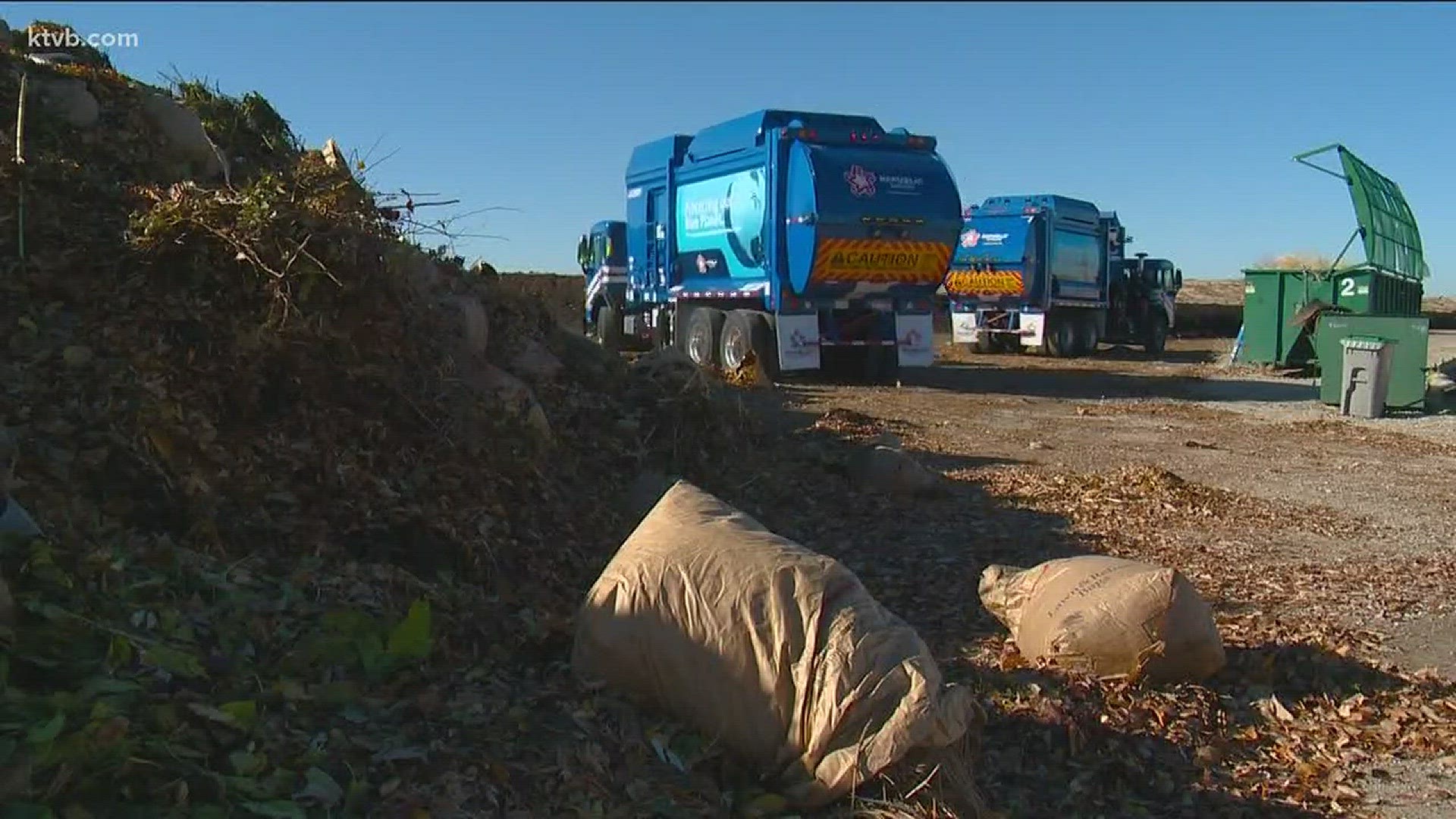As the leaves continue to pile up in your yard or driveway, the city of Boise is asking residents to keep its composting program in mind when disposing of them.
The program, now in its fifth month, has grown to 18 million pounds of compostable material, but not without a few hiccups along the way.
You may be surprised to learn how long it takes leaves, wood and other foliage to be turned into recycled fertilizer. The good news is the city of Boise says their compost program is going so well that this material is going to be ready for residents by next month.
Since the compost bins were first distributed in the beginning of June, Catherine Chertudi of Boise Public Works says resident participation has been very high.
"It's going very well, we planned on about 95 tons per day to be collected and in September we collected 143 tons per day, so it's going beautifully," Chertudi said.
However, one struggle has been keeping trash out of the green-lidded bins.
"We still see some plastic bags, we absolutely cannot have plastic bags in the compost or in our recycle bins, so no plastic bags in compost or recycling," Chertudi said. "The other one that's been kind of funny is a lot of tennis balls, and the only thing we can think of is dogs and all of the tennis balls the dogs play with in the yard, so make sure you cleanup not only your pet manures, but maybe your dog toys before you put them in the compost bin."
Chertudi says pesticides used on residential lawns are less toxic than ones on commercial yards so that hasn't been an issue, but she warns residents to be conscious of when they treat their yards.
"If you have to apply a pesticide, do it early in the week before you might mow your lawn or rake up your grass and leaves so that it has time to sort of soak into the ground and dissipate in the environment," she said.
Once the compost is dumped at the processing site it's ground, watered and temperature monitored for more than 100 days.
"It goes through a grinder and after the grinder it's placed into rows called windrows up to 10-feet wide, about six- to eight-feet high and a hundred feet long, and they're watered, and the temperature and the moisture content are constantly monitored, and they're constantly turned to make sure that the composting process, so all those good bacteria and enzymes break down the material," Chertudi said. "At the end of the process then we take it and we grind it again and we finish curing it and then it will be ready for the public."
Chertudi estimates compost will be ready by mid-November.

